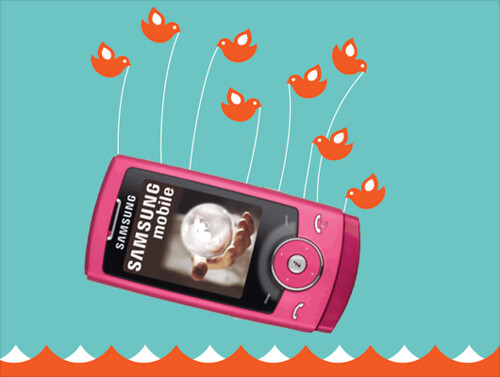 |
| Fail Phone by Rammikins! |
Today on the Technology in the Arts blog, a further investigation of the burning question--mobile phones: good or evil? Last week, we investigated the evils of mobile phone technology in the context of arts audiences. This week, it’s time to turn on your cell phones and explore how mobile phones can help the audience engage with arts organizations on a personal level.
There are quite a few examples of mobile phones being used quite creatively for marketing and audience development initiatives. I’ve heard of a few different arts orgs twittering backstage during performances. Most notable is the Broadway show Next to Normal, which tweeted an entire performance in short little 140-character spurts. You can still read the archived tweets here. And by this point, many orgs have mobilized fans through social media via their smartphones or even with texting services offering discounts. The artistic and production staff are harnessing the power of a mobile social network, too. In July, the Old Vic’s invited audiences into the creative process of its 24-Hour Play Marathon, with tweets from followers shaping the direction of some of the plays. During the national staging of The Laramie Project: Ten Years Later, audience members used Twitter from their phones at many theatres to ask questions at post-show forums. In addition to coordinating the Q & A sessions, theatres across America that participated in the project used Twitter to sync their production with the “lead” show at Lincoln Center. For a unique national project like The Laramie Project: Ten Years Later, an application like Twitter that is easily accessible from a cell phone is perfect to coordinate artists, production staff, and audiences.
If we drift away for a minute from the concept of cell phone use during the show, we see people starting to discover with their inner arts-lover with all kinds of cool apps being developed for smart-phones:
- There’s the Gustavo Dudamel iPhone app, where you can conduct "March to the Scaffold" or "Dream of a Witches' Sabbath" from Berlioz's Symphonie Fantastique.
- There’s the bizarre, yet popular ocarina app, which turns the phone itself into a musical instrument. (video footage below)
- Most of us have now heard of Pandora Internet Radio, which recommends songs based on songs you like. Pandora apps are available on the iPhone, Blackberry, Palm Pre and a variety of other phones.
- Zoozbeat, which allows users to compose their own songs with a variety of instruments by simply shaking and moving their iPhone, was recently featured on CNN.com.
- If you are more the theatrical type, the complete works of Shakespeare are now available on an iPhone app.
- In the visual arts arena, your phone can become your canvas with the Brushes app, an iPhone finger-painting tool. (Gallery of Brush app art at the end of the post.)
Will apps like the ones listed above increase the audience's desire to flock to the theatre? Hard to say. But one thing is certain--show time is still a boundary that none of these apps and few of the organizations using smartphone technology seem willing to cross.
In pondering last week’s entry on the evils of cell phones in the audience, I began to wonder if proper cell phone etiquette is merely a question of our expectations for the specific venue. For example, I doubt anyone would be bothered by people texting at a broadcast of an opera in a baseball stadium, or perhaps even an outdoor lawn concert. This summer, the National Symphony Orchestra started twittering program notes to audience members in lawn seating. Sure, some people might still be bothered by the LCD lights and the “text-offender”’s inattention to the performance at hand, but outdoor concerts have a different aura about them. It’s like people expect to be distracted by the sights and sounds of nature, especially if they are sitting on picnic blankets with a cooler of beer next to them. But, then again, it’s a sliding scale. When I think of the last two outdoor venues I attended in Kansas City, my reaction to texted program notes would have been quite different. The first is Heart of America Shakespeare Festival, a rollicking good time with a temporary stage and lawn seating. Audiences are encouraged to bring their own picnics and drinks to the show. On the other hand, there’s Starlight Theatre, which brings in touring Broadway productions every year. The performances take place in a large (permanent) amphitheatre with a stage and seating approximating a large indoor performing arts center. Texted program notes at the Shakespeare Festival? Great. Starlight, I’m not as enthusiastic. It’s too close to an indoor venue and part of me feels like the same rules should apply.
So maybe it’s a question of societal expectations. As we are often told, social etiquette at the theatre was quite different “back in the day” when, watching the performance was optional and (sometimes they’d seen it multiple times), talking was almost expected. The overture was initially conceived as a signal for all to get to their boxes. In some of the more low-rent houses, audiences would jeer the performers or even throw vegetables. (sometimes they still do…) But today’s cultural values center around respecting the artists on stage. It’s sewn into the experience of going to a live arts performance in America. We’ve experienced a cultural shift in expectations in the opera house since the old days. Perhaps we will again with the advent of these new technologies.
Bottom line: with great smartphone power comes great responsibility. A responsibility to our audience to engage them on their level, balanced with a responsibility to respect the experience of art for both the audience and artist. These two duties will come into conflict more and more in the coming decades, and it's also our responsibility to wonder--and determine for our own organizations--at what point the two can meet.
